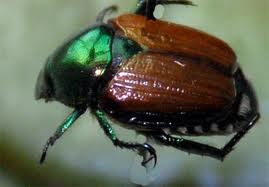Page 1 of 1
Bracken Clock 1250
Posted: Wed Jun 26, 2013 2:03 pm
by William Anderson
I have never tied using the rooster pheasant neck feathers required for the Bracken Clock. Thanks to Kelly for her efforts and the discussion about this fly. I can imagine it would be an effective pattern under the right circumstances, but someone will have to explain to me how this resembles, imitates or even suggests a beetle. Please enlighten me if you know.
It is an interesting feather. I don't usually tie patterns that I have a hard time relating to, but I enjoyed this one.
Bracken Clock 1250
Hook: Daiichi 1250 #12
Thread: 8/0 Red
Hackle: Rooster Pheasant neck feather (right?)
Body: Bronze Peacock
Rib: Cardinal Pearsall's Silk - doubled into a cord
 Bracken Clock Variant 1250
Bracken Clock Variant 1250
Hook: Daiichi 1250 #12
Thread: 8/0 Black
Hackle: Rooster Pheasant neck feather (right?)
Body: Bronze Peacock
Rib: Amber Wire - Small

Thanks Kelly for inspiring this attempt.
w
Re: Bracken Clock 1250
Posted: Wed Jun 26, 2013 2:56 pm
by Kelly L.
William, they are wonderful! Did you find that feather a bit difficult? I am honored I inspired you to tie these. They are lovely.
Re: Bracken Clock 1250
Posted: Wed Jun 26, 2013 2:57 pm
by William Anderson
So as I was politely corrected, there are hundreds of varieties of beetles and they're not all the #14 black/green hard round crunchy bites that I see around here.

- beetle.jpg (6.62 KiB) Viewed 4192 times
(image and species source unknown (google) bad karma...I know.)
The fly pattern seems like an lively presence as a wet fly, but as the author in Kelly's thread says, when the trout get sated on the usual fare, maybe this is the thing to get the fish moving. Could be.
Re: Bracken Clock 1250
Posted: Wed Jun 26, 2013 3:10 pm
by CreationBear
but someone will have to explain to me how this resembles, imitates or even suggests a beetle.
My personal theory (fortunately "unfalsifiable" in a Popperian sense

) is that trout (at least in current) don't really see insects as whole, intact images, but rather they view potential food sources "prismatically;" i.e.
something
in that whirl of motion of the fly tumbling downstream looks enough like
something they've eaten before that they're ready to give it a go. Absent a "negative trigger," that's enough to stimulate a reflexive behavior, even if the input is only (or especially?) that of simulated movement.
Or, to put it another way, trout look at the Bracken Clock they way, say, Picasso might: the bit of fluttery brown/maroon hackle might allude to the elytra of a Japanese Beetle, or an amber wing being crinkled by the current; the peacock herl might mimic the flash of light off chitin. In slower water, a smarter fish might see the dark tips of the hackle as the tibia/tarsus of a beetle's legs.
Or else, peacock herl is simply magic.


Re: Bracken Clock 1250
Posted: Wed Jun 26, 2013 6:38 pm
by redietz
CreationBear wrote:
Or else, peacock herl is simply magic.

Whether or not a Bracken Clock or a Coch-y-bondhu actually resembles a real beetle (both of those are specific beetles, btw) peacock herl
is magic.
Not doubt about it.
Re: Bracken Clock 1250
Posted: Wed Jun 26, 2013 7:28 pm
by Mataura mayfly
I imagine the choice of colour and length of hackle represents (or is meant to) the wing cases of this type of beetle and the black tips the legs?
The beetle has a somewhat furry body, so peacock herl is probably the best representation of this.
http://www.flickr.com/photos/39474263@N03/8993376545
All a guess, as the beetles are not natural here, but we do use Coch-y-bondhu a lot to imitate the brown beetle we do have.





